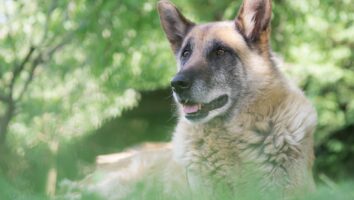Articles
Articles, questions and guides on pet care.
Can dogs catch colds?
If your dog is coughing and has a runny nose, you may be wondering if she has a common cold. It’s important to know that dogs can show cold-like symptoms due to a variety of causes including…
Rabbit Dental Anatomy and Oral Health
Do you know how many teeth rabbits have? Do they have baby teeth that fall out like humans as they get older? Do you need to brush your rabbits’ teeth? Keep reading to learn the answers to these…
The Importance of Kidney Health and Function in Dogs and Cats
Dogs and cats, like all mammals, have kidneys that perform many vital life functions. Keeping these organs healthy and recognizing early signs of disease can help your pet live a long, happy life.…
Your Pet’s Heart: A Guide to Understanding Heart Health in Dogs and Cats
Have you ever considered what an important function the heart serves? The heart beats continuously to move blood throughout the body, every day, all day for the entirety of your pet’s life. This…
Anatomy and Function of Your Pet’s Eyes
Dogs’ and cats' eyes work similarly to our eyes and can develop similar eye problems like cataracts, glaucoma, and more. Read on to learn some fun and interesting facts about the anatomy of the eye,…
Feline Leukemia Virus
Feline Leukemia Virus, or FeLV, is a retrovirus that infects felines only (domestic cats and some wild felids like cheetahs and the Florida panther). Feline Leukemia is the most common infectious…
Feline Immunodeficiency Virus
Feline Immunodeficiency Virus, or FIV, is a retrovirus that infects felines only (it cannot spread to people, dogs or other animals). FIV is found around the world but is not as prevalent as the…
Reverse Sneezing in Dogs
Reverse sneezing in dogs is a rather common occurrence but can be very distressing to witness, especially for the first time! When dogs reverse sneeze, it looks like they’re having a hard time…
Protecting Your Cat from Feline Distemper
Feline distemper is caused by a virus called panleukopenia, which is actually a parvovirus. Panleukopenia variants are present around the world and can also infect lions, tigers, lynx, minks, and…
Laryngeal Paralysis in Dogs
Laryngeal paralysis is a medical condition affecting dogs, where the muscles in the larynx are no longer able to move the arytenoid cartilages open and closed. The larynx is part of the upper…
Horner’s Syndrome in Dogs and Cats: What to Look for in Your Pet
Horner’s Syndrome is not a disease itself, but a combination of clinical symptoms that can have multiple potential causes. While this can affect dogs and cats of any age, from juveniles to senior…
Common Causes of Coughing in Dogs
A common concerning symptom you may notice in your dog is a new cough. Is this something to worry about? What could be causing it? Follow below for more information regarding the common causes of…
How to Give Your Dog Oral Medication
Giving a dog his medicine is rarely easy, but knowing the proper procedure and what to expect can make the process more pleasant — for you and your dog. To start, prepare all the medications that…
Inflammatory Bowel Disease (IBD) in Cats
Inflammatory bowel disease, also called IBD, is the most common cause of continued or chronic vomiting and diarrhea in cats (and dogs), meaning vomiting and/or diarrhea occurring at least twice a…
Caring for Your Pregnant Dog
Having puppies may sound easy and fun, but there is actually quite a bit of work that you need to do both before and after your dog gives birth. Proper planning and care can do a lot to minimize…
Panosteitis in Dogs (Growing Pains)
Panosteitis, also known as growing pains, refers to a self-limiting yet painful bone condition involving the long leg bones of young large breed dogs generally between ages 5 and 18 months.…
Feline Asthma
Cats have very unique respiratory systems. They can be quite sensitive and show signs of distress quickly. Feline asthma, similar to human asthma, can be a difficult disease to control. Read on to…
Brachycephalic Syndrome in Dogs
Brachy means shortened and cephalic means head. Therefore, brachycephalic dogs have skull bones that are shortened in length, giving the face and nose a pushed-in or “smoosh-face” appearance. Common…
























